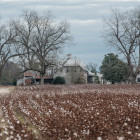
OP-ED: Once a Bad Girl, Not Always a Bad Girl
|
The numbers tell us two sobering facts about girls and juvenile justice. First, they tell us that the percentage of girls in the juvenile justice system has steadily increased over the decades, rising from 17 percent in 1980 to 29 percent in 2011. Second, girls are more likely than boys to be arrested for “status offenses” — behaviors that would not be considered offenses at the age of majority — and often receive more severe punishment than boys. According to the Coalition for Juvenile Justice’s issue brief, Girls, Status Offenses and The Need For A Less Punitive and More Empowering Approach, a disproportionate number of the status offenses petitioned in the courts every year are brought against girls. Between 1995 and 2009, the number of petitioned cases for curfew violations for girls grew by 23 percent vs.










